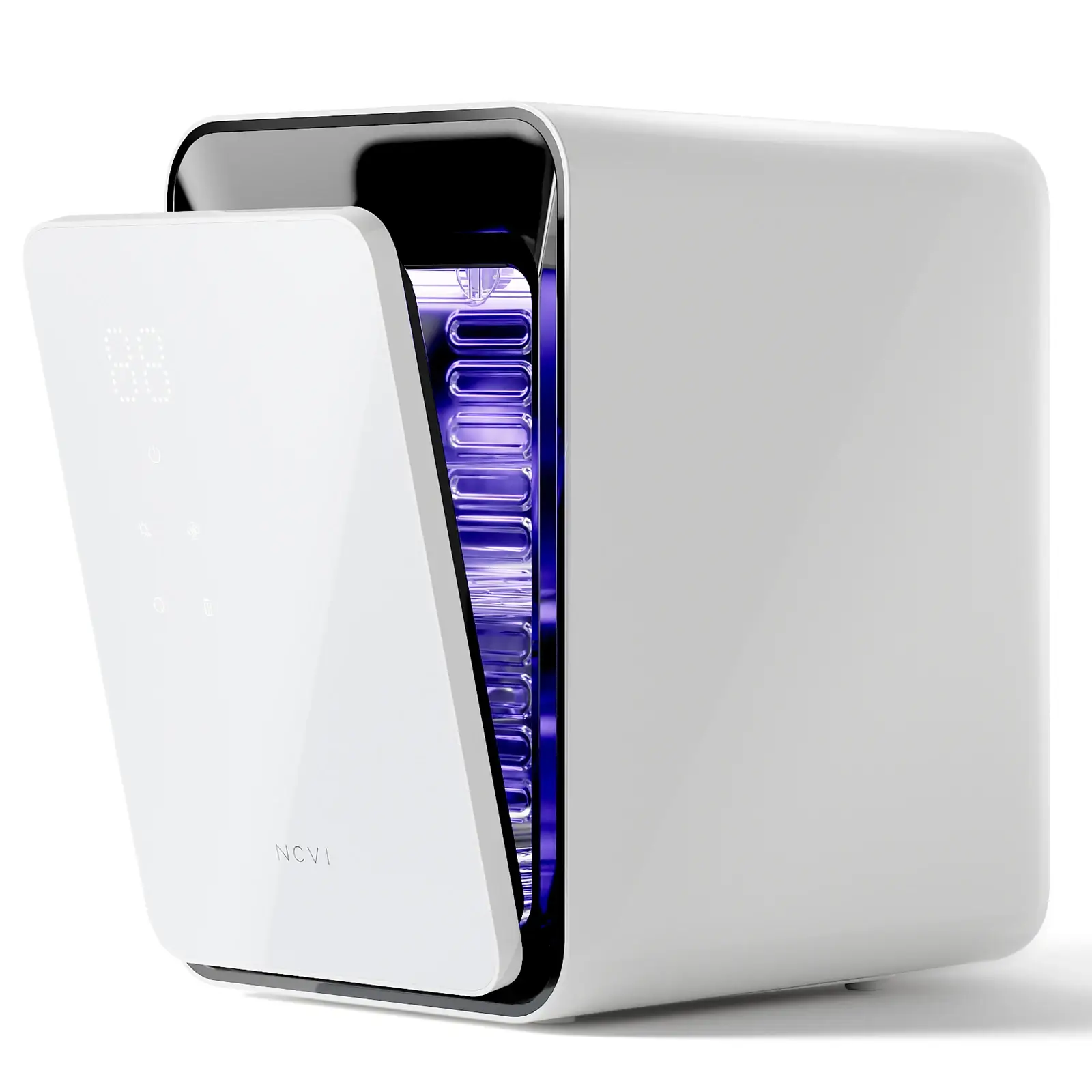Language


When you care for your baby, it’s important to keep their items clean. Baby bottles are used a lot, but they can hold germs if not cleaned well. A UV sterilizer for baby bottles helps make sure your baby’s bottles are safe.
In this guide, you will learn about UV sterilizers for baby bottles, how they work, why they are important, and how to use them.
A UV sterilizer for baby bottles uses UV light to kill germs on the bottles. UV light can clean things without chemicals, which makes it safe for baby bottles.
UV sterilizers use UV-C light to break down germs and stop them from spreading. This method cleans the bottles and doesn’t leave any chemicals behind.
Sanitizing baby bottles is important because babies are more likely to get sick from germs. A UV sterilizer for baby bottles has many benefits:
Kills Germs
UV sterilizers kill up to 99.9% of bacteria, viruses, and germs. This makes sure your baby’s bottle is clean and safe.
No Chemicals
UV sterilization uses only light, so you don’t need to worry about chemicals. It is a natural and safe way to clean.
Quick and Easy
Using a UV sterilizer is fast. Just put the bottles inside, press a button, and let it work. It’s easy for busy parents.
Doesn’t Damage Bottles
UV sterilizers don’t use heat or chemicals, so they are gentle on bottles like Ncvi baby bottles. This helps the bottles last longer.
Can Sterilize Other Items
Many UV sterilizers can also clean pacifiers, breast pump parts, and toys. They are useful for cleaning other baby items.
UV sterilizers use UV-C light to clean baby bottles. This light kills germs by damaging their DNA so they can’t grow or spread.
Here’s how it works:
UV Light Exposure
When you put the bottles inside, the UV light hits them. The light kills the germs on the bottles.
Complete Cleaning
UV sterilizers make sure all parts of the bottle get exposed to the light. This way, the whole bottle is sanitized.
Automatic Turn-Off
Most UV sterilizers turn off automatically when the sterilization is done. This shows that the bottles are safe to use.
There are many UV sterilizers to choose from. Here are some things to think about:
Size and Capacity
Make sure the sterilizer fits the bottles you use. Some sterilizers only hold one or two bottles, while others can hold more.
UV-C Light
Make sure the sterilizer uses UV-C light. This is the best type for killing germs.
Ease of Use
Pick a sterilizer that is easy to use. Most models need just one button to start. Look for one that turns off automatically when done.
Portability
If you travel with your baby, pick a small, portable UV sterilizer. Some models have rechargeable batteries.
Extra Features
Some UV sterilizers can dry bottles or clean pacifiers and toys. These features can be helpful.
UV sterilization is safe if used the right way. It doesn’t leave chemicals, so it’s safe for baby bottles. But UV light can harm the skin and eyes, so follow the instructions. Most UV sterilizers have safety features that turn off the light if the lid is opened.

Using a UV sterilizer is easy. Here’s how:
Clean the Bottles First
Wash the bottles with soap and water before putting them in the sterilizer. This helps remove milk and other things so the UV light can clean the bottles well.
Place the Bottles Inside the Sterilizer
Put the bottles inside. Make sure the bottles are arranged so the UV light can reach all parts.
Start the Sterilization
Close the lid and press the start button. The sterilizer will begin.
Wait for the Process to Finish
It usually takes about 5-10 minutes. When the sterilizer is done, it will turn off.
Store the Bottles
After the process is done, take the bottles out and store them in a clean place. Some sterilizers dry the bottles, so they’re ready to use.
UV sterilization is a good way to clean baby bottles. It is quick, effective, and safe. If you want a gentle method without chemicals, UV sterilization is a good choice.
Email cannot be empty
Password cannot be empty
Email format error
Email cannot be empty
Email already exists
6-20 characters(letters plus numbers only)
The password is inconsistent
Email format error
Email cannot be empty
Email does not exist
6-20 characters(letters plus numbers only)
The password is inconsistent